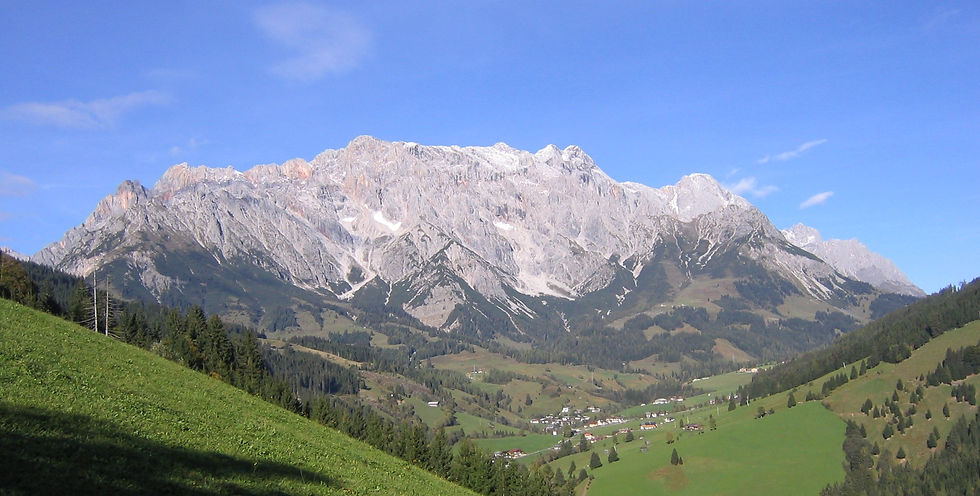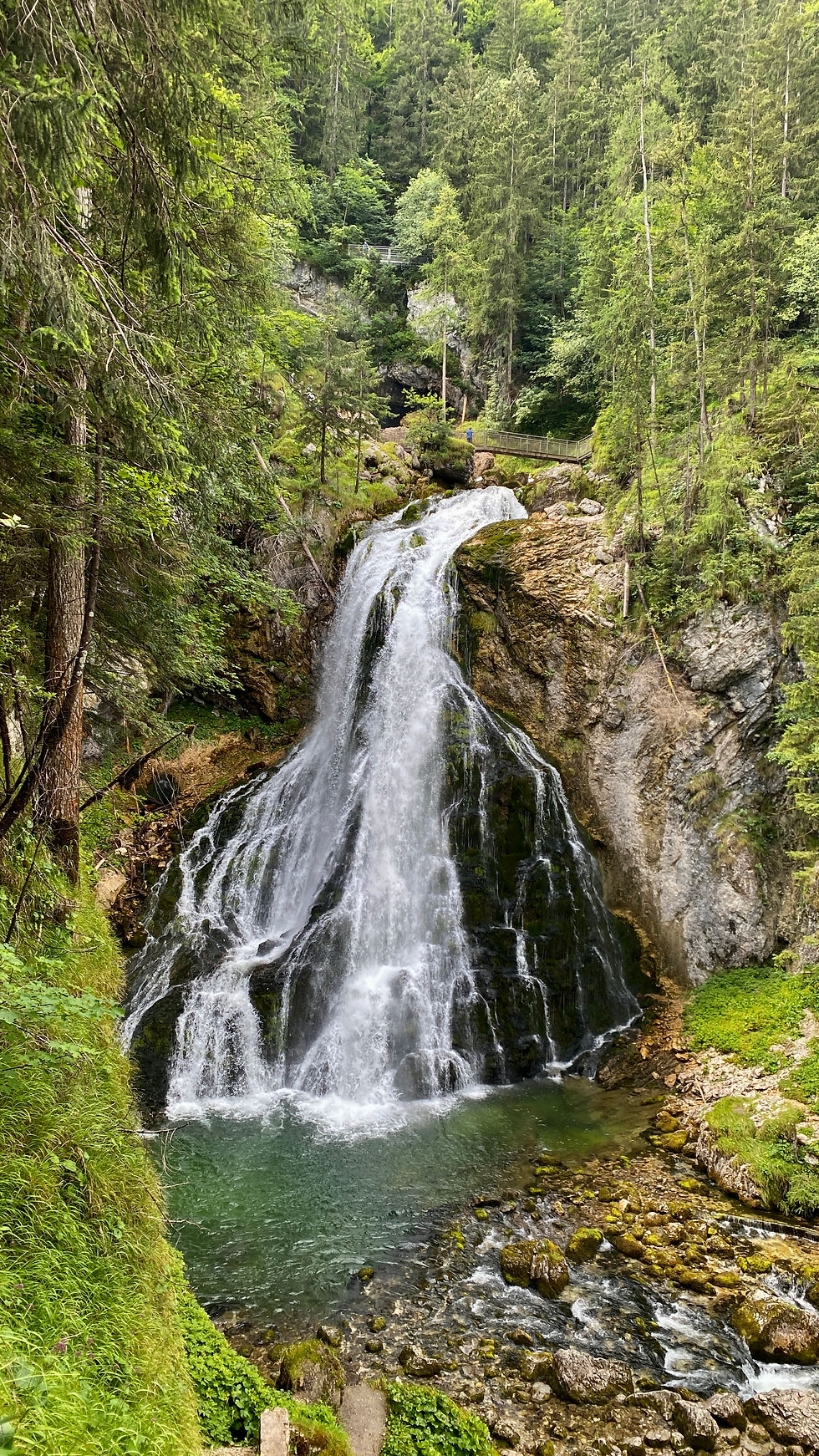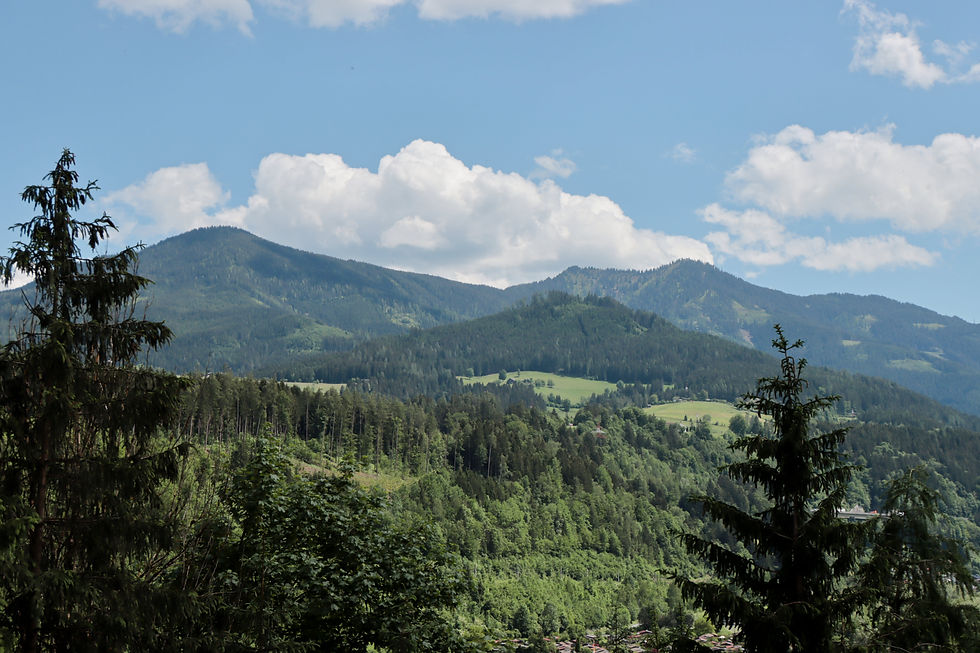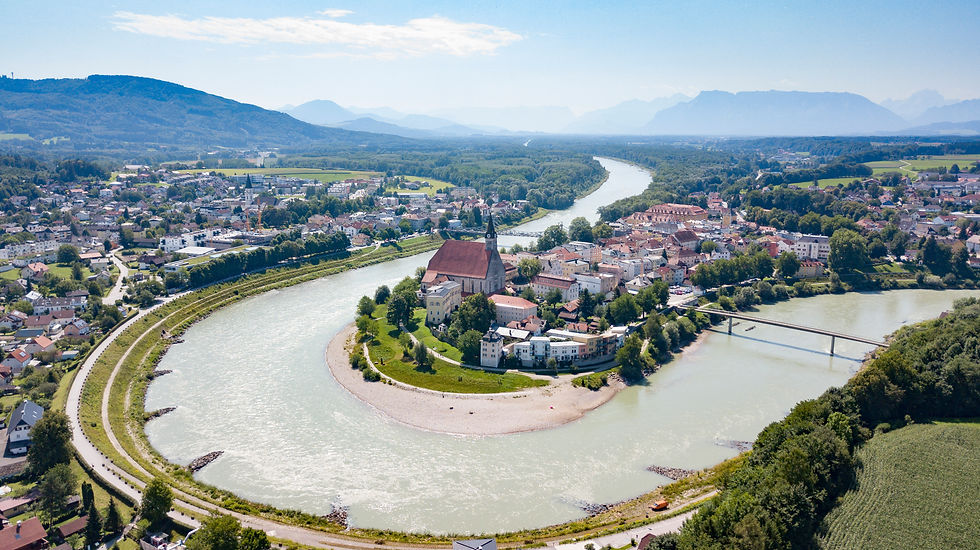Discover Austria and Explore the Geodiversity of the Ore of the Alps UNESCO Global Geopark
- Wayne Munday
- Aug 24
- 4 min read
Updated: Sep 10
Sip back and discover Austria’s Salzburg Region and explore the Ore of the Alps UNESCO Global Geopark an Alpine landscape shaped by tectonic forces, glaciations and a millennia of human mining activity. Stretching across Bischofshofen, Mühlbach am Hochkönig, Hüttau, and St. Veit im Pongau this geopark encompasses the Northern Limestone Alps, Greywacke Zone and Tauern Window. The Hochkönig, Hagen, and Tennengebirge ranges feature rugged limestone and dolomite massifs, karst plateaus and extensive cave systems including the Eisriesenwelt the world’s largest ice cave while the Greywacke Zone’s slates and phyllites support a subdued topography and host substantial copper and gold deposits formed through hydrothermal processes. The Tauern Window exposes highly metamorphosed Penninic nappes that tell a story of Alpine mountain building. Glacial activity, including the Salzach Glacier, has sculpted valleys and deposited sediments still visible today. Visitors can explore geological trails, mining museums, panoramic hikes and observe wildlife such as Ibex, Apollo Butterflies and Black Grouse as well as experience seasonal Alpine flora.

The Northern Limestone Alps are represented by the Hochkönig, Hagen and Tennengebirge ranges, consist predominantly of limestone and dolomite, producing the rugged, brittle landscapes exemplified by the Mandlwände near Mühlbach am Hochkönig. The Mandlwände are a series of dramatic rock formations and steep cliffs located in the Hochkönig massif region of the Austrian Alps known for their striking, “bizarre” appearance, they form a scenic backdrop for several outdoor activities such as hiking, mountain biking, and ski touring.
The Tennengebirge lays between the Dachstein Mountains to the east and the Berchtesgaden Alps to the west and is a prominent karst plateau within the Northern Limestone Alps of Salzburg, Austria known for its steep cliffs, rugged highlands and extensive cave networks. It is part of the Salzburg Limestone Alps Nature Reserve, established in 1985 to protect this unique ecosystems and geological features.
Spanning approximately 60 square kilometres the range features 22 peaks rising above 2,000 metres with the Raucheck (2,430m) as its highest point. Its landscape is shaped by karst limestone eroded over a millennia by water to form sinkholes, grooves, and caves including the Eisriesenwelt the world’s largest ice cave. The nearby communities of Werfen, Werfenweng and Golling serve as gateways for tourism.

By contrast the Alpine Greywacke Zone is characterised by a sandstone composed of quartz, feldspar, rock fragments and clay minerals. It was formed in a marine foreland basin mainly during the Variscan orogeny. Greywacke is widespread across Central Europe including the Harz, Rhenish Slate Mountains, Thuringian Slate Mountains as well as the Alpine Greywacke Zone. Owing to its hardness and durability greywacke has long been used as a construction material.

The Alpine Greywacke Zone also has softer slates and phyllite a fine-grained, foliated metamorphic rock formed from shale or slate under heat and pressure. Containing mica, it has a satin-like sheen and splits into thin sheets, positioning it between slate and schist in texture and luster. The Alpine Greywacke Zone topography is more subdued giving rise to the rounded summit of the Hochgründeck.
Extending east–west across the Eastern Alps the Greywacke Zone represents one of the region’s most important metallogenic provinces and contains substantial copper resources that have historically defined the region’s economic and cultural history.

Copper mineralisation of copper sulphides, primarily chalcopyrite and fahlore-group minerals such as tetrahedrite are typically associated with quartz veins in the Alpine Greywacke Zone. Copper was deposited through hydrothermal processes. In addition to copper, gold mineralisation also occurred from sulphur-rich hydrothermal fluids particularly in the Rauris Valley where would be prospectors occasionally gold pan for stream placer or alluvial deposits in sediments and also at the abandoned copper mines of Larzenbach near Hüttau.

The Tauern Window is a major geological feature of the Eastern Alps in Austria where exposures of large folded deformed thrust sheets of highly metamorphic rock called Penninic nappes formed by the collision, subduction, uplift, folding, faulting and rapid exhumation, largely associated with the European and Adriatic (Apulian) tectonic plates during the Alpine orogeny.
Originally composed of sediments and oceanic crust from the Alpine Tethys and the European margin. This rock was scraped off the subducting plate and stacked into thrust sheets and was subsequently deformed under high pressures and temperatures during the Alpine orogeny. The nappes contain a diverse assemblage of deep marine sediments metamorphosed into phyllites, schists and amphibolites.

Following the uplift of the Alps and during the Quaternary Period beginning 2.6 million years ago the landscape of this region was influenced by repeated glaciations and especially by the Salzach Glacier a major piedmont glacier. Today, the Salzach River flows through this glacially shaped landscape.

The geopark offers numerous ways to explore from the Visitor Centre in Bischofshofen that introduces the visitor to the region through interactive exhibits on geology, biodiversity, and mining history. The Kupfergeist (Copper Ghost) Adventure Trail guides visitors along historic mining paths where interpretive panels explain how copper shaped both the land and its people.
The geopark also offers exceptional opportunities for wildlife observation. Black Grouse display in spring forest clearings while Alpine Swifts dart along cliff faces. In summer, wildflower meadows attract the rare Apollo Butterfly (Parnassius apollo), its patterned wings emblematic of healthy alpine ecosystems. At higher elevations, reintroduced Ibex reclaim their place on rocky slopes, an encouraging symbol of ecological restoration.

The Ore of the Alps UNESCO Global Geopark in Salzburg showcases geology, ecology and human history. Encompassing limestone massifs, the Greywacke Zone and the Tauern Window this region reflects tectonic collisions, glaciations and mineralisation that shaped the Eastern Alps. Its copper and gold deposits highlight prehistoric mining that influenced regional culture and trade while karst landscapes, ice caves, and glacial landforms illustrate powerful natural processes. Today, the geopark preserves this heritage through trails, museums and wildlife protection serving as both a centre for research and conservation and a destination for sustainable tourism.







